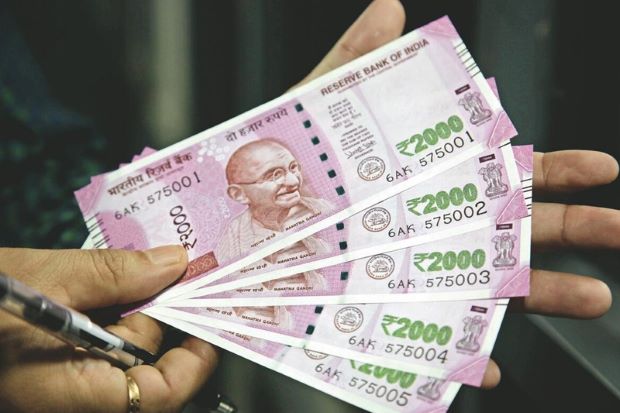COLOMBO – The Reserve Bank of India (RBI) has permitted Indian banks to extend Indian rupee-denominated loans to customers in Sri Lanka, Bhutan and Nepal, a move expected to deepen regional financial integration and support economic recovery in neighbouring countries.
Under the new framework, Indian banks will be able to lend directly in rupees to individuals, businesses and financial institutions in these countries. Importantly, branches of Indian banks operating in Sri Lanka will also be allowed to issue INR loans to local banks and individual borrowers.
“This development will make credit more accessible for businesses in Sri Lanka,” the Indian High Commission in Colombo said in a statement, welcoming the decision.
“The provision allowing such loans to be denominated in Indian rupees will be particularly beneficial for Sri Lankan businesses, reducing exchange rate risks and strengthening cross-border trade and financial linkages between the two countries.”
Indian rupee loans could provide an important alternative to borrowing in US dollars, which has traditionally been the norm for cross-border financing. Sri Lanka’s weak credit rating following its 2022 sovereign debt default has made access to international capital markets difficult and expensive. Loans in Indian rupees, especially when sourced from Indian banks, may come at lower risk premiums.
Analysts note that Sri Lankan borrowers might even find rupee borrowing more attractive than dollar borrowing, as the Indian rupee has experienced a relatively steady and predictable depreciation path compared to many emerging market currencies. While INR interest rates may be slightly higher, reduced volatility and exchange rate exposure could offset the cost.
India remains one of Sri Lanka’s largest trading partners and a major source of imports. If Indian exporters agree to accept payment in rupees, not just for trade financing but for actual trade settlement, this could accelerate the shift towards the Indian rupee as a regional trade currency, similar to how Russia and some other countries now accept INR for bilateral trade.
During Sri Lanka’s severe balance of payments crisis in 2022, Indian banks played a vital role by confirming Letters of Credit (LCs) for essential goods and even allowing exports based on informal payment guarantees when Sri Lankan banks were unable to secure financing.
However, the situation has since changed. With the Central Bank of Sri Lanka halting excessive money printing and inflation falling below its previous 5% target, dollar liquidity in the domestic banking system has improved significantly. Sri Lankan banks are now in a position to lend to or finance Indian institutions and companies, an unusual reversal in the traditional financial relationship between the two countries.
The Indian rupee once functioned as the dominant regional currency across South Asia, parts of the Middle East (including present-day Dubai and Qatar), and even sections of East Africa under British rule. It was effectively the “dollar” of the region.
India’s decision to allow rupee-denominated loans abroad comes at a time when it is actively trying to internationalize the Indian rupee. It has already signed currency settlement agreements with over a dozen countries and is promoting the INR through its Unified Payments Interface (UPI) system for cross-border digital payments.
For Sri Lanka, the RBI’s move signals a potential shift away from dollar dependency, first in trade finance and now in lending. If the mechanism is widely used, it could pave the way for greater use of the Indian rupee in South-South financial cooperation.
However, analysts caution that the long-term success of rupee internationalization depends on India maintaining monetary stability and avoiding the inflationary policies that historically undermined confidence in the currency.
-ENCL



Comments are closed, but trackbacks and pingbacks are open.